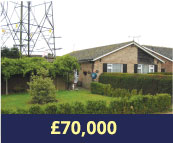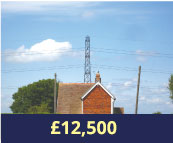In the news: Anglia Business

Shocking effect on property prices
It is a little known fact that most pylons and high voltage lines you see around today were constructed on temporary rights before the war or in the 1960s. These can be terminated, which means that the electricity company have to remove the electricity line entirely or mostly at their cost, or pay out a large sum of compensation.
Commercial and residential development land can be seriously devalued by the presence of overhead or underground lines. Large claims can arise because land is sterilised for building along the route of the line and, in the case of housing, properties built alongside are devalued and difficult to sell.
Many developers assume that the only way to deal with high voltage lines is to suffer their presence and build around them or to foot the bill for the full cost of removal as quoted by the electricity company. This is not the case where a line is present under a terminable wayleave.
Such an agreement will have been in paper form originally but may not have been renewed as ownerships change. However, even if a current owner does not have a written agreement, it is normally still possible to terminate it. When terminated, the electricity company potentially has to remove the line. If the electricity company wish the line to remain, it has to negotiate a payment reflecting the loss in value of the land. If the landowner insists on removal, the electricity company has to apply to the Secretary of State for longer term rights at a Wayleave Hearing. Going to a Wayleave Hearing is expensive for both sides and so it is more usual to negotiate a settlement.
It is recommended that any developer or property owner affected by high voltage lines should source advice from a specialist chartered surveyor in this field as the legislation surrounding electricity lines contains many unusual quirks and there are many pitfalls for the unwary. My advice is to use someone on a no win, no fee basis and obtain an initial free consultation.
Article originally published in October 2010 by Anglia Business magazine.









